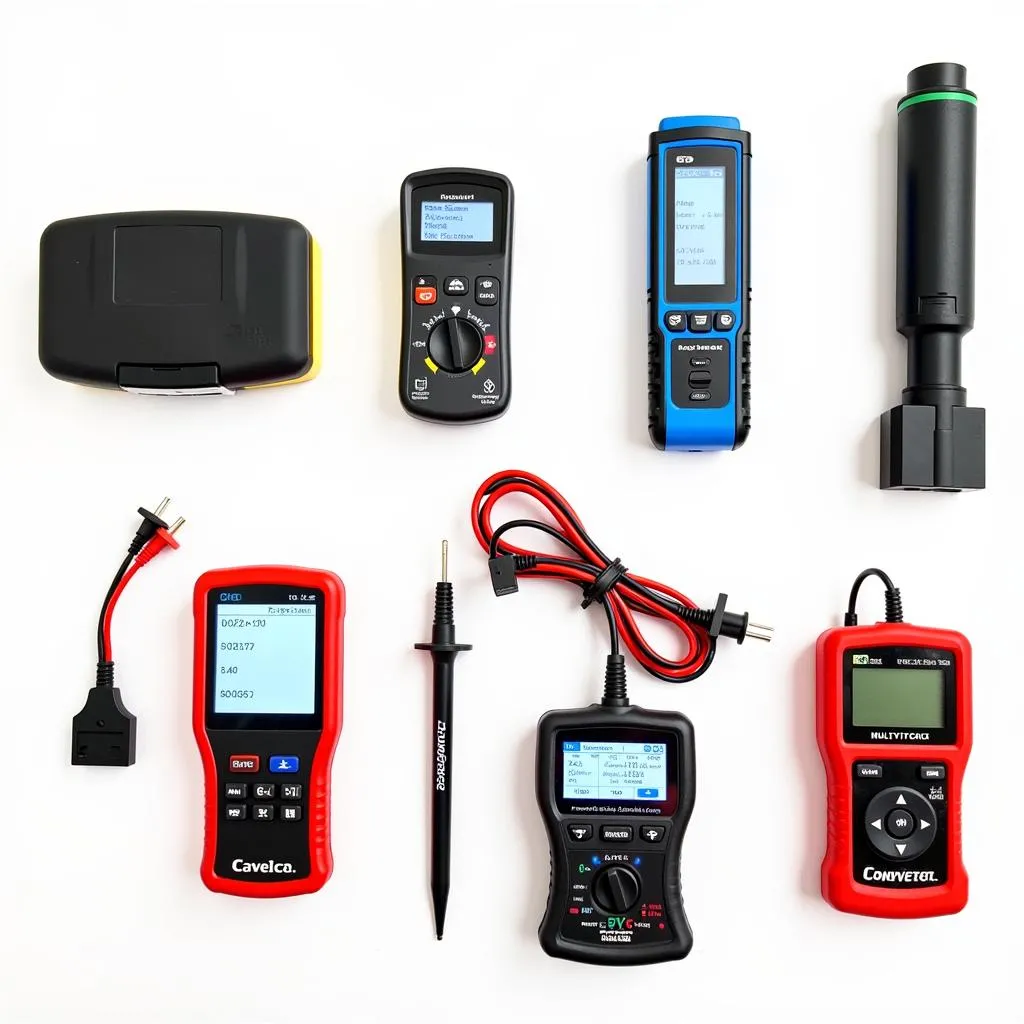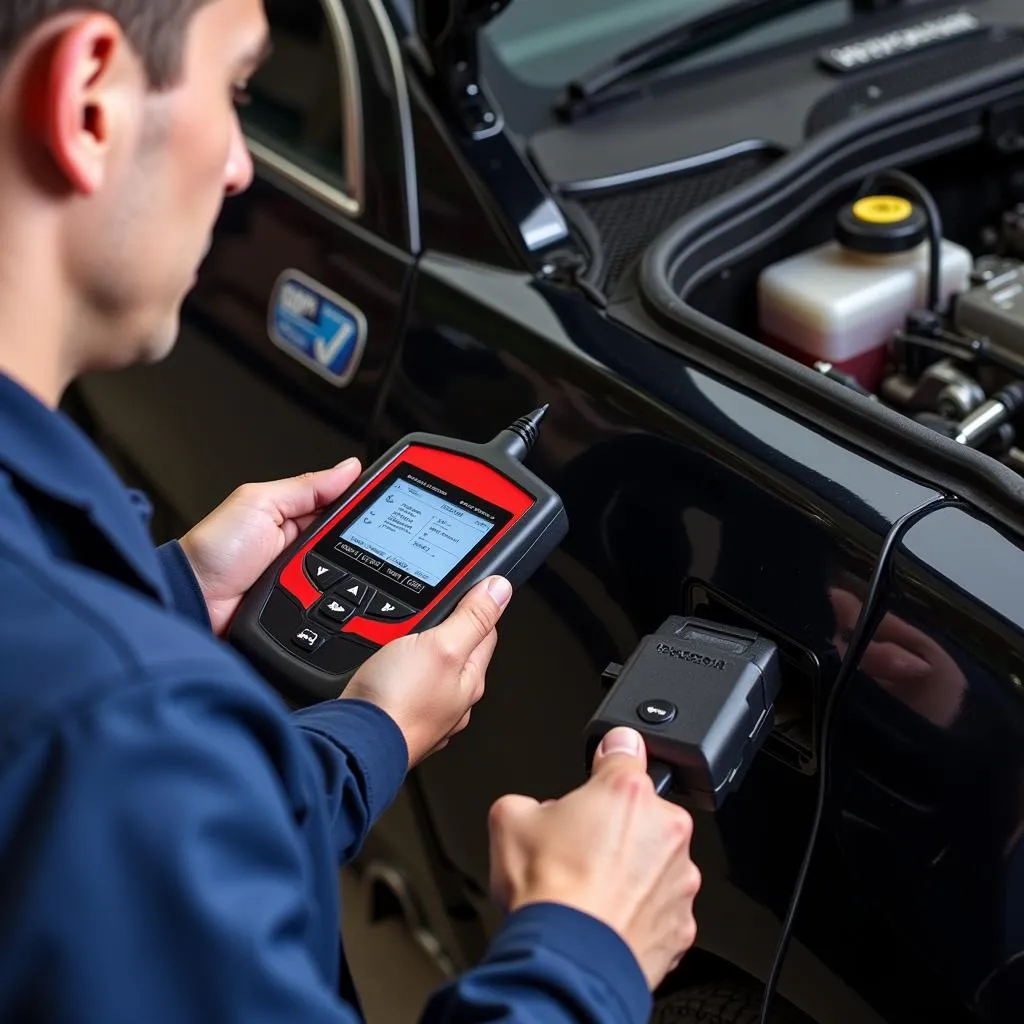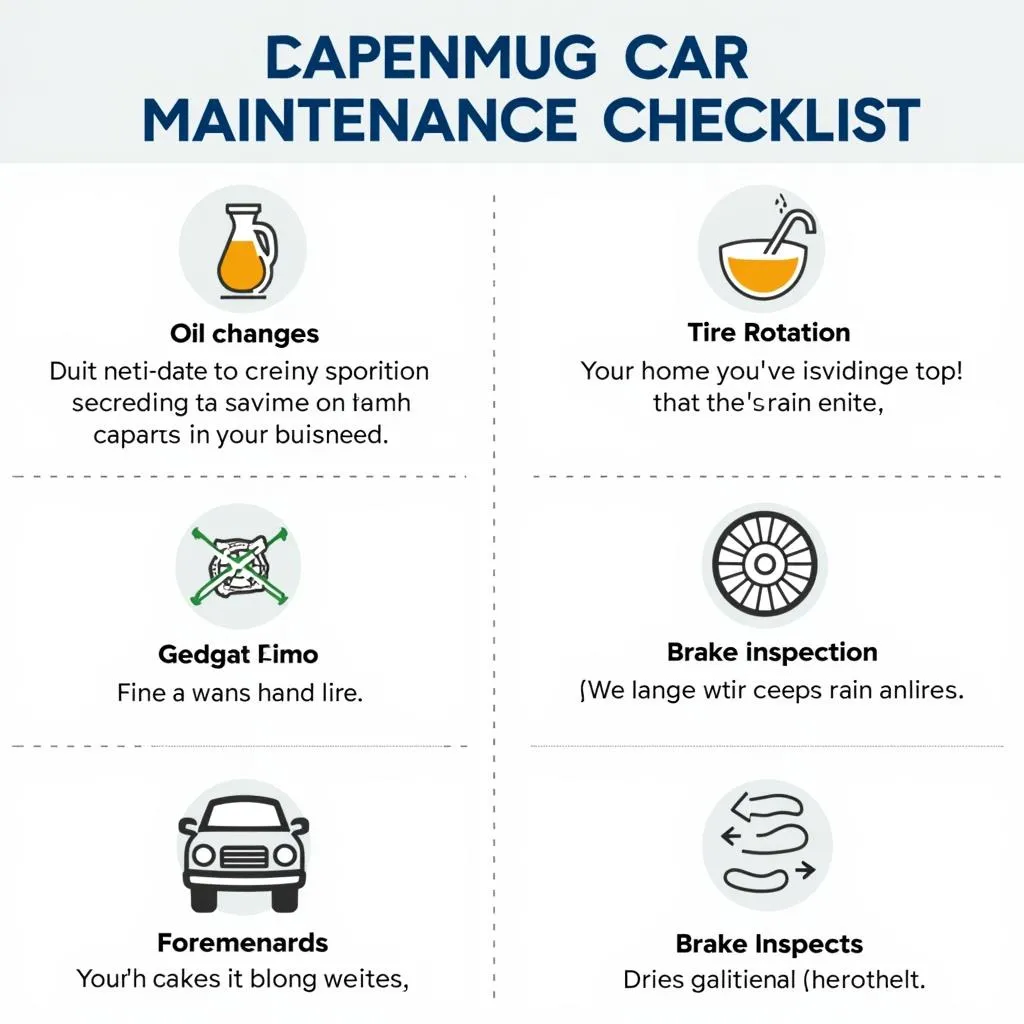Automotive troubleshooting is the systematic process of identifying, diagnosing, and resolving issues that affect a vehicle’s performance, functionality, or safety. From minor hiccups to major breakdowns, understanding the basics of troubleshooting can save you time, money, and frustration. This guide delves into the essentials of automotive troubleshooting, empowering you to tackle common car problems with confidence.
The Importance of Effective Automotive Troubleshooting
A well-executed troubleshooting approach is crucial for several reasons:
- Accurate Diagnosis: Accurately pinpointing the root cause of a problem prevents unnecessary repairs and expenses.
- Cost Savings: Identifying and addressing issues early on can prevent minor problems from escalating into costly repairs.
- Enhanced Safety: Promptly addressing safety-related concerns ensures the vehicle remains safe to operate.
- Increased Knowledge: Understanding how your vehicle works empowers you to make informed decisions about maintenance and repairs.
 Car Diagnostic Tools
Car Diagnostic Tools
Essential Tools for Automotive Troubleshooting
Before embarking on your troubleshooting journey, having the right tools is essential. While specialized equipment is crucial for complex diagnoses, a basic toolkit can go a long way:
- OBD-II Scanner: An indispensable tool for modern vehicles, an OBD-II scanner retrieves diagnostic trouble codes (DTCs) stored in the vehicle’s computer, providing valuable insights into potential issues.
- Multimeter: A multimeter measures electrical properties like voltage, current, and resistance, aiding in diagnosing electrical faults.
- Basic Hand Tools: A set of screwdrivers, wrenches, pliers, and sockets are essential for accessing and manipulating vehicle components.
- Work Light: A bright work light illuminates the engine bay and undercarriage, making it easier to inspect and work on your vehicle.
Common Automotive Problems and Troubleshooting Tips
While countless potential issues can arise, understanding some common problems and their associated symptoms can significantly aid in troubleshooting:
1. Engine Problems
- Difficult Starting: A car that struggles to start could indicate problems with the battery, starter motor, fuel system, or ignition system. Check the battery terminals for corrosion, inspect spark plugs, and ensure the fuel pump is functioning correctly. If you’re facing starting issues, you might want to explore our article on difficult to start car for a detailed guide on resolving this issue.
- Rough Idling: Rough idling can be caused by vacuum leaks, clogged fuel injectors, or a faulty idle air control valve. Inspect vacuum hoses for cracks or disconnections and consider cleaning the throttle body and idle air control valve.
- Loss of Power: A noticeable decrease in engine power can result from issues like a clogged air filter, faulty spark plugs, or a failing fuel pump. Replace the air filter if dirty, inspect spark plugs for wear and tear, and consider checking fuel pressure.
2. Electrical System Malfunctions
- Dead Battery: A dead battery is often caused by a faulty alternator, parasitic drain, or simply an old battery. Have the battery and alternator tested, and inspect for any electrical components that may be drawing power even when the vehicle is off.
- Electrical Shorts: Electrical shorts can manifest in various ways, from blown fuses to malfunctioning lights. Inspect wiring harnesses for damage, and use a multimeter to check for continuity and resistance.
- Sensor Issues: Modern vehicles rely heavily on sensors. A faulty sensor can disrupt various systems. Use an auto testing machine or an OBD-II scanner to identify and address sensor-related problems.
 Engine Diagnostics
Engine Diagnostics
3. Brake System Problems
- Spongy Brakes: Spongy or soft brake pedals can indicate air in the brake lines. Bleeding the brakes is crucial to remove any air bubbles.
- Squealing Brakes: High-pitched squealing noises when braking usually signal worn brake pads. Inspect the brake pads and replace them if necessary.
- Pulling to One Side: If the car pulls to one side while braking, it could be due to uneven brake pad wear, a stuck caliper, or a problem with the hydraulic system.
4. Transmission Troubles
- Slipping Gears: If the transmission slips out of gear, it could be a sign of low transmission fluid, worn clutch components, or internal transmission damage.
- Rough Shifting: Difficulty shifting gears smoothly can be caused by low transmission fluid, a worn clutch, or problems with the shift linkage.
- Transmission Fluid Leaks: Inspect the transmission pan and surrounding areas for any signs of leaks. Low transmission fluid levels can lead to serious damage.
Advanced Troubleshooting with Diagnostic Scanners
Modern vehicles are equipped with sophisticated onboard computer systems. [PC based automotive diagnostic tools](https://diagxcar.com/pc-based-automotive-diagnostic tools/), like advanced diagnostic scanners, provide in-depth insights into these systems, enabling technicians and experienced DIYers to perform complex diagnoses:
- Reading and Interpreting DTCs: Scanners retrieve DTCs and provide detailed descriptions, making it easier to understand the nature of the problem.
- Live Data Monitoring: Observing live sensor data in real-time allows for monitoring system performance and identifying anomalies.
- Component Activation: Some scanners can activate specific components, such as fuel injectors or solenoids, to test their functionality.
When to Seek Professional Help
While DIY troubleshooting can be rewarding and cost-effective, knowing when to call in a professional mechanic is important:
- Complex Issues: Intricate problems involving internal engine components, transmissions, or complex electrical systems often require specialized knowledge and tools.
- Safety Concerns: If you suspect a problem that could compromise safety, it’s best to leave it to the experts.
- Lack of Experience: If you’re unfamiliar with automotive systems or uncomfortable working on your vehicle, seeking professional assistance is always recommended.
Choosing the Right Automotive Diagnostic Scanner
Selecting the appropriate automotive diagnostic scanner is crucial for effective troubleshooting. Consider these factors when making your choice:
- Vehicle Compatibility: Ensure the scanner is compatible with your vehicle’s make, model, and year.
- Functionality: Determine the features you need, such as reading and clearing DTCs, live data streaming, and component activation.
- Ease of Use: Opt for a user-friendly scanner with a clear interface and intuitive software.
- Budget: Diagnostic scanners vary widely in price, so set a budget that aligns with your needs and frequency of use.
If you’re looking for recommendations on the best diagnostic scanners in the market, you can check out our article on what is the best-selling automotive diagnostic scanner for an in-depth analysis and comparison.
 Car Maintenance Checklist
Car Maintenance Checklist
Conclusion
Automotive troubleshooting, while sometimes daunting, is an essential skill for any car owner. By understanding the basics, investing in the right tools, and adopting a systematic approach, you can confidently address many common car problems. Remember, a little knowledge and the right guidance can empower you to keep your vehicle running smoothly and safely for years to come.